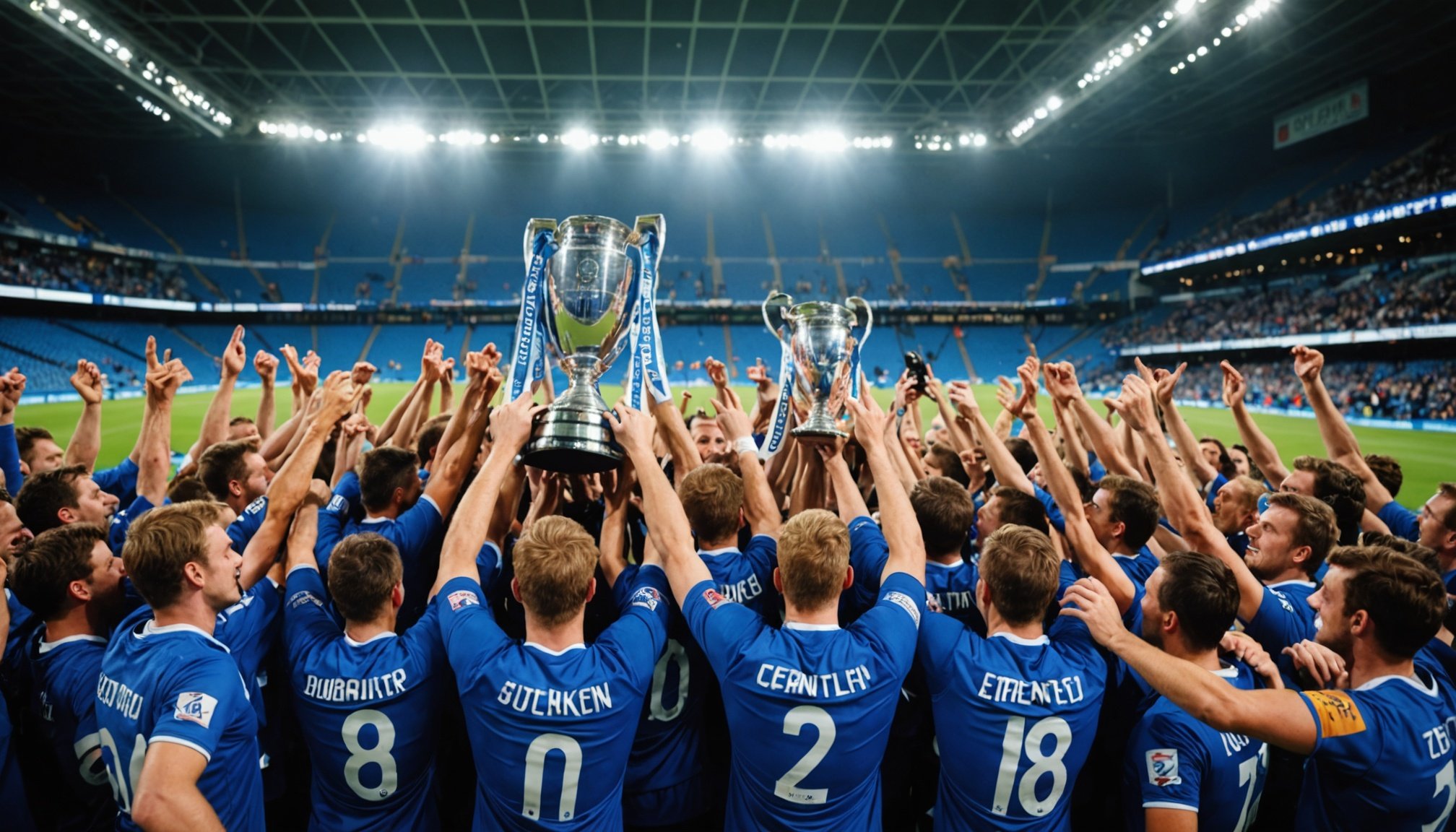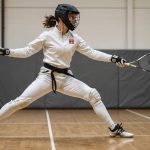Importance of a Championship Environment in UK Sports Clubs
A championship environment is more than just a culture of winning; it fosters an atmosphere where both athletes and coaches thrive. This environment emphasises collaboration, mutual respect, and shared goals, creating a foundation for continuous improvement. Within such a framework, sports clubs can significantly enhance both performance and member satisfaction.
The relation between a positive team culture and improved performance can be profound. Clubs that focus on nurturing this atmosphere see enhanced camaraderie, which translates into better cooperation on the field. Athletes feel more connected and valued, leading to increased motivation and a stronger commitment to the club’s objectives. Furthermore, it fosters personal growth, as members feel supported and encouraged to achieve their personal best.
Also read : Conquering corners: unlocking the power of virtual simulations for uk motorbike racers” mastery
In the UK, several sports clubs have set exemplary standards by successfully cultivating a championship environment. These clubs highlight how prioritising the right attributes can lead to exceptional outcomes. Typically, they emphasize effective communication, supportive mentorship, and a focus on mental well-being. As a result, these organisations not only achieve success in competitions but also retain high morale among their members.
Implementing these strategies can transform any sports club into a thriving community, fostering both competitive success and personal fulfillment.
Additional reading : Boosting Performance: A Comprehensive Guide to Mental Health Strategies for UK Track and Field Coaches
Leadership Techniques for Cultivating Team Culture
In sports settings, effective leaders wield inspirational vision that propels teams toward success. Their approach is rooted in leadership strategies that go beyond delegation, focusing on personal growth and cohesiveness. One such strategy is promoting inclusivity, ensuring each member feels valued and heard. By fostering a transparent environment, leaders build trust and encourage open communication, pivotal for robust team dynamics.
Team leadership involves embracing diverse opinions, making room for varied perspectives that contribute to a unified goal. This inclusivity cultivates a sense of belonging, enhancing team spirit and collaboration. Transparency in decision-making processes further solidifies this trust, enabling teams to align their efforts with the overarching vision.
Coaches play a central role in exercising these leadership strategies by modeling a championship mindset. This involves demonstrating resilience, dedication, and a positive attitude, setting the standard for the team. A coach’s influence extends beyond tactics, as they nurture the emotional and mental well-being of each athlete, aligning with the holistic approach necessary for peak performance.
To inspire and motivate, a coach’s influence is vital in engraining values of discipline and commitment. These principles, championed by capable team leadership, pave the way for enduring success and accomplishment.
Effective Communication Strategies
In sports, communication skills are the backbone of successful team communication and sports collaboration. Open communication channels are crucial for fostering team cohesion and ensuring that everyone is aligned with the team’s goals. When open lines of dialogue are established, team members feel valued, leading to improved performance and satisfaction.
Encouraging constructive feedback among team members enhances understanding and trust. Techniques such as active listening and positive reinforcement help others feel heard and appreciated. These methods motivate individuals to express ideas or concerns without fear of judgment, paving the way for sports collaboration.
Implementing effective communication models can significantly impact team dynamics. For instance, the DESC (Describe, Express, Specify, and Consequences) model is popular in sports settings. It encourages players to describe a situation, express their feelings, specify desired changes, and explain the consequences of these changes. This targeted model ensures that players communicate effectively, preventing misunderstandings.
By nurturing these skills, teams can improve synergy and performance. Ensure that everyone understands the communication skills necessary for a thriving sports environment. It aids in building trust, enhancing team morale, and ultimately leading to victory in athletic pursuits.
Team-Building Activities That Foster Unity
In the realm of UK sports clubs, team-building exercises are integral to creating a cohesive unit. These activities go beyond mere games, serving as vital components in fostering unity and boosting team morale. Many clubs have successfully implemented diverse team-building strategies tailored to meet specific group dynamics. One popular approach involves engaging in sports activities that require collaboration and strategic thinking. These not only promote physical fitness but also enhance communication and trust among team members.
Social events also play a crucial role in camaraderie building. They offer informal settings that allow team members to connect on a personal level, strengthening bonds and empowering individuals to thrive within the group. Such events, when executed effectively, can significantly uplift team spirit and morale.
Innovation is key in these activities. Some clubs have introduced innovative approaches by incorporating technology or unusual challenges, which keep the spirit of teamwork fresh and engaging. These fresh strategies help maintain enthusiasm and highlight the importance of cooperation, ultimately leading to a more unified team. Emphasizing these facets can transform team dynamics, ensuring everyone feels valued and included.
Monitoring Progress and Adjusting Strategies
Continuously evaluating progress assessment is key to maintaining a healthy team culture and enhancing performance. Success hinges on employing effective evaluation techniques to measure improvements and setbacks over time.
Tools such as surveys, performance metrics, and feedback sessions are instrumental in assessing team dynamics and gauging member satisfaction. These facilitate more informed decisions on enhancing collaboration and addressing issues as they arise. For example, regular feedback can reveal hidden areas of discontent or opportunities for innovation that may otherwise go unnoticed.
To ensure strategies are effective, frequent reassessment and strategy adaptation based on gathered insights are necessary. This includes adjusting processes, roles, or objectives to align with evolving team needs and goals. Teams should not shy away from pivoting their approach when results or feedback indicate room for improvement. For instance, if communication issues are identified, introducing tools that streamline interaction could significantly boost productivity and morale.
In summary, implementing robust progress assessments, employing diverse evaluation techniques, and being open to strategy adaptation are essential actions for teams aiming to foster a thriving and progressive work environment. By doing so, they stand better equipped to meet challenges head-on and maintain a trajectory toward sustained success.
Community Engagement and Support Networks
Community involvement is crucial in establishing a championship environment by fostering a sense of solidarity and shared goals. Local sports clubs, leveraging their relationships within the community, can effectively contribute to this process. Engaging with various local organisations offers mutual benefits, such as resource sharing and increased visibility for both the sports club and the community partners.
Building robust partnerships with community entities fosters a supportive ecosystem where sports clubs can thrive. These partnerships might range from collaboration with schools to provide training programs to working with local businesses for sponsorships. As both parties invest in these relationships, they create opportunities for growth and success.
Support systems further enhance team development and culture. A well-structured support network includes not only the athletes and coaching staff but also extends to fans, volunteers, and family members. Each group plays a vital role in uplifting the team during challenging times and celebrating achievements together.
In conclusion, a community-driven approach not only fortifies team culture but also links sports clubs to a broader societal framework, ensuring sustained success. Encouraging community engagement and nurturing support systems form the backbone of any accomplished sports club, leading to enduring affiliations that benefit all involved.





